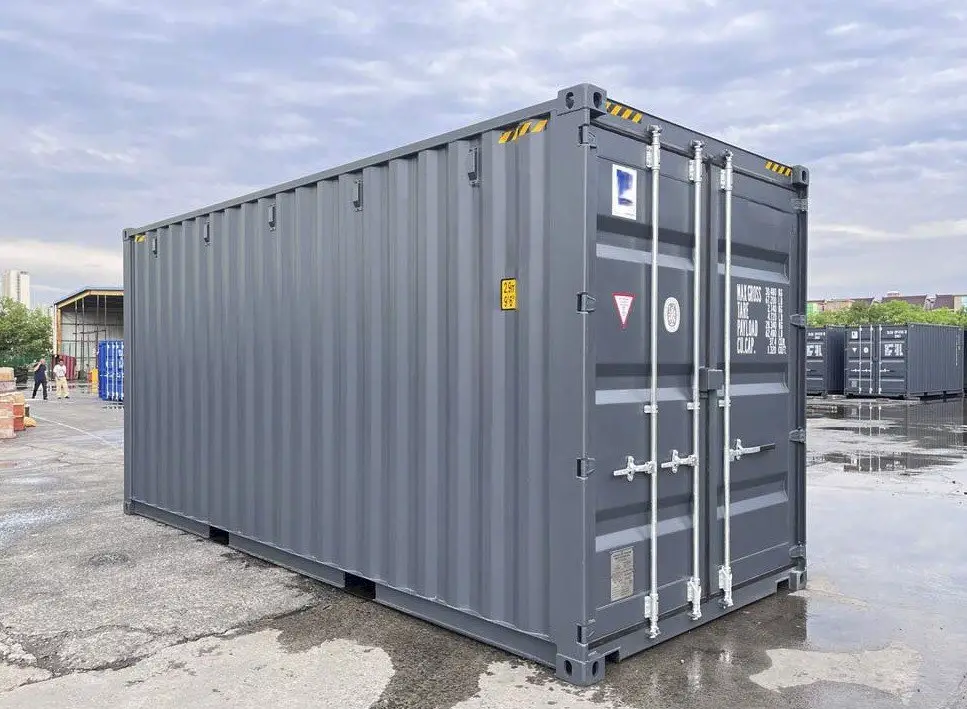Types of shipping containers - a complete guide
Maritime transportation is the cornerstone of modern international logistics. In this guide, we will look at the different types of shipping containers, their applications and technical specifications.
Basic types of shipping containers
Standard containers (Dry Van)
The most versatile type of shipping containers, available in two basic sizes: 20′ i 40′. They are characterized by tight construction and are used for transporting most standard goods. They are ideal for transporting boxed, palletized cargo and bagged goods.
High Cube (HC) containers
These are taller versions of standard containers, offering additional cargo space. HC containers are particularly useful for transporting lightweight but voluminous goods. Their height is 9'6″ (2.896 m), a foot more than standard containers.
Open Top Containers
Containers with an opening roof, ideal for loading goods from above using a crane. They are used in transportation:
- Industrial machinery
- Oversized cargo
- Heavy structural components
Refrigerated containers (Reefer)
Equipped with a refrigeration unit, they make it possible to freight requiring controlled temperature:
- Food products
- Drugs
- Temperature-sensitive chemicals
Dimensions and capacity of sea containers
Containers 20′
- Length: 6,058 m
- Width: 2,438 m
- Height: 2,591 m
- Payload: approximately 21-22 tons
Containers 40′
- Length: 12,192 m
- Width: 2,438 m
- Height: 2,591 m
- Payload: approximately 26-27 tons

Specialized transportation solutions
Platform containers
They are used to cargo transport Oversized and unusual. They can be equipped with special fastenings and security features. Particularly useful for transportation:
- Steel structures
- Construction machinery
- Large-size components
Tank containers (Tank)
Designed to transport liquid cargo:
- Fuels
- Chemicals
- Food products in liquid form
Choosing the right container
When selecting a container, consider:
- Type of goods transported
- Temperature requirements
- Габариты груза
- The planned route of transportation
- Loading and unloading requirements

Benefits of container standardization
Standardization of shipping container dimensions has contributed to:
- Improvements in handling processes
- Reduce transportation costs
- Possibilities of easy combination of different means of transport
- Increase cargo security
Containers in transportation practice
Container transportation is the backbone of modern shipping. Each type of container has its own specific uses and features that affect the efficiency of transporting different types of cargo.
Application of standard containers (Dry Van)
Standard containers are the most widely used in maritime transportation. They are used for transportation:
- Palletized goods
- Products in cartons
- Industrial products
- Bagged goods
- Furniture and equipment
Use of High Cube containers
HC containers are particularly popular for transportation:
- Light volume goods
- Automotive components
- Furniture
- Electronic equipment
- Packaging materials
Loading and unloading process
Container preparation
Before loading, each shipping container undergoes a detailed inspection, including:
- Checking for leaks
- Inspection of the condition of the floor and walls
- Verification of closing mechanisms
- Assessing the cleanliness of the interior
Loading techniques
Depending on the type of container and cargo, different loading methods are used:
- Side loading (standard containers)
- Open Top Loading
- Pump loading (tank containers)
- Specialized loading (oversized cargo)
Container transport safety
Cargo securing systems
Properly securing goods in a container includes:
- Use of tie-down straps
- Use of space fillers
- Use of anti-slip mats
- Corner protection
Transport monitoring
Modern containers can be equipped with:
- GPS systems
- Temperature and humidity sensors
- Alarm systems
- Electronic seals
Documentation in container transport
Key documents in the maritime transport of containers:
- Bill of Lading
- Packing list
- CSC Certificate
- Special certificates (for dangerous cargo)
- Customs documents
Economics of container shipping
Cost optimization
Economic efficiency is influenced by:
- Choosing the right type of container
- Maximum use of cargo space
- Transport route planning
- Optimization of reloading time
Trends in container shipping
Current developments include:
- Increase the share of specialized containers
- Development of monitoring systems
- Automation of handling processes
- Green transportation solutions
Container transportation is a complex process that requires proper planning and coordination. Proper container selection and professional logistics handling are critical to the success of the transportation operation.
Summary
The variety of available types of shipping containers allows for efficient transportation of virtually any type of cargo. The right choice of container type is crucial to the safety of the goods and optimization of transportation costs.
Q: What are the most common types of shipping containers?
A: The most common types of shipping containers are multipurpose containers (dry van), high cube (HC) containers, open top containers, platform containers and refrigerated containers. Each is designed to transport a variety of goods and has its own specific uses in shipping.
Q: What is the difference between a high cube (HC) container and a standard container?
A: The high cube (HC) container differs from the standard container mainly in height. While a standard container is typically 2.59 meters high, an HC container is 2.90 meters high. This extra space allows for loading more cargo or transporting taller loads.
Q: What are the typical dimensions of shipping containers?
A: Typical dimensions for shipping containers are 20 feet (length 6.06 m, width 2.44 m, height 2.59 m) and 40 feet (length 12.19 m, width 2.44 m, height 2.59 m). HC containers have the same length and width, but increased height to 2.90 meters. The external dimensions are standardized, making transportation and handling easier.
Q: What are open top containers used for?
A: Open top containers, or open top containers, are used to transport goods that are too tall or bulky to load through a standard container door. They allow loading from the top using a crane, which is particularly useful for machinery, large parts or oversized cargo.
Q: What goods can be transported in refrigerated containers?
A: Refrigerated containers are designed for transporting goods that require controlled temperatures. They can be used to transport food products such as fruits, vegetables, meat, fish, as well as pharmaceuticals, flowers or some chemicals. These containers have a refrigeration system that maintains a constant temperature throughout sea transportation.
Q: What are the characteristics of platform containers?
A: Platform containers are special types of shipping containers that consist of a flat base without side walls and a roof. They are ideal for transporting very heavy cargo, machinery, vehicles or structural components. Thanks to their open design, they allow easy loading and securing of unusual cargo.
Q: How many Europallets will fit in a standard 40-foot container?
A: A standard 40-foot container can hold about 25-26 Europallets. However, the exact number may vary depending on the method of stacking, the type of goods and their dimensions. It is worth consulting with your shipper to make optimal use of the container's cargo space.
Q: What are the advantages of using shipping containers for international transportation?
A: There are many advantages to using shipping containers for international transportation. First of all, they provide protection of goods from weather conditions and mechanical damage. Standardization of container dimensions facilitates transshipment and transportation by various modes of transport (sea, rail, road). In addition, containers allow efficient use of cargo space and simplify logistics processes at ports and transshipment centers.







